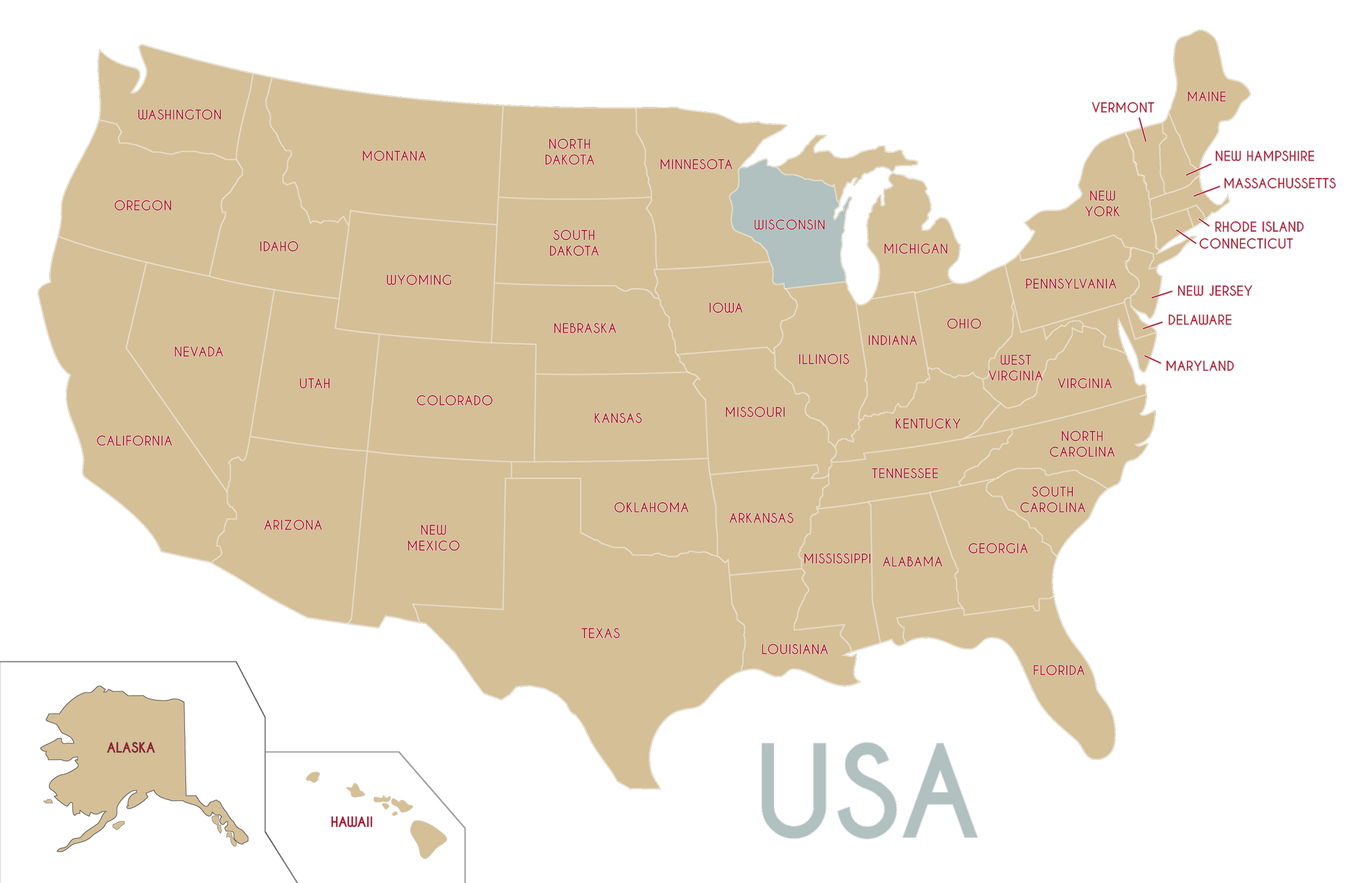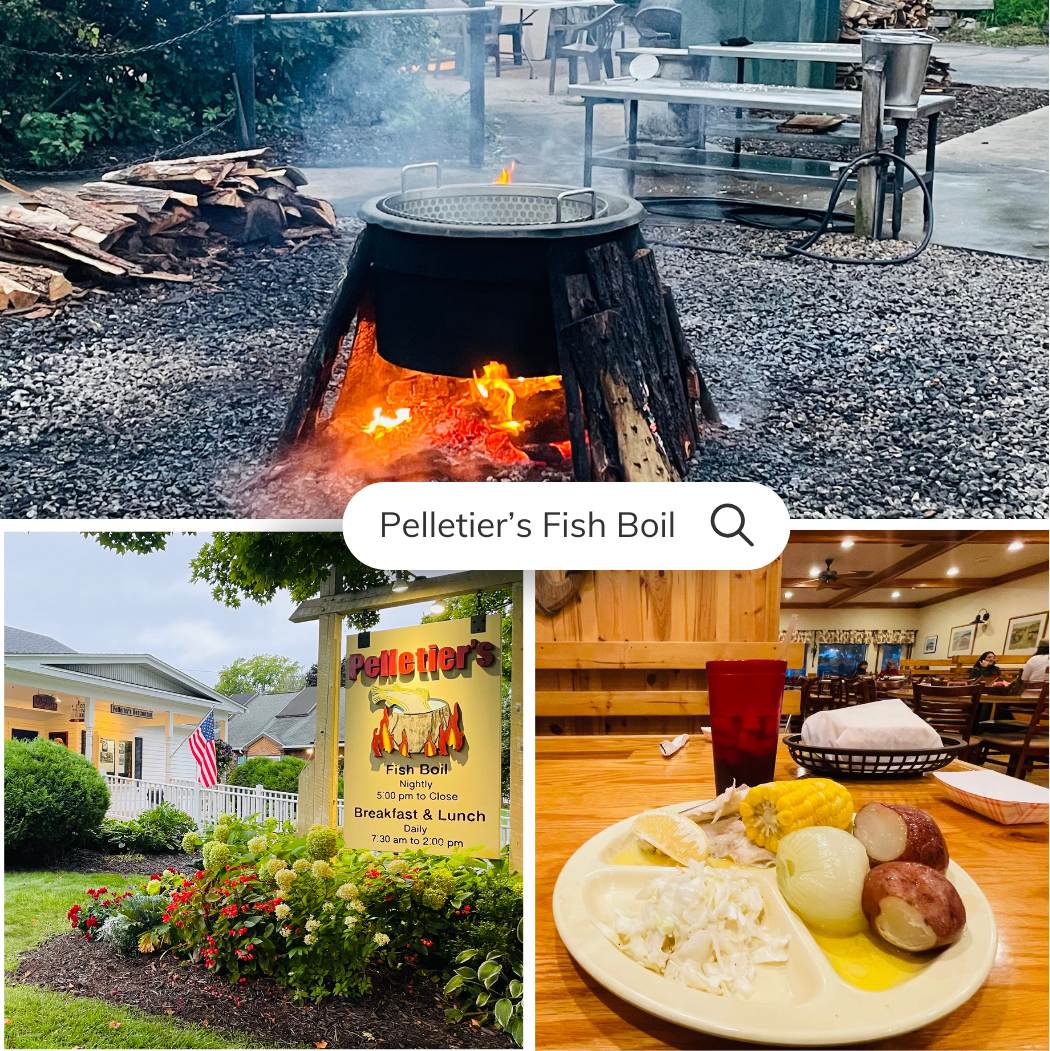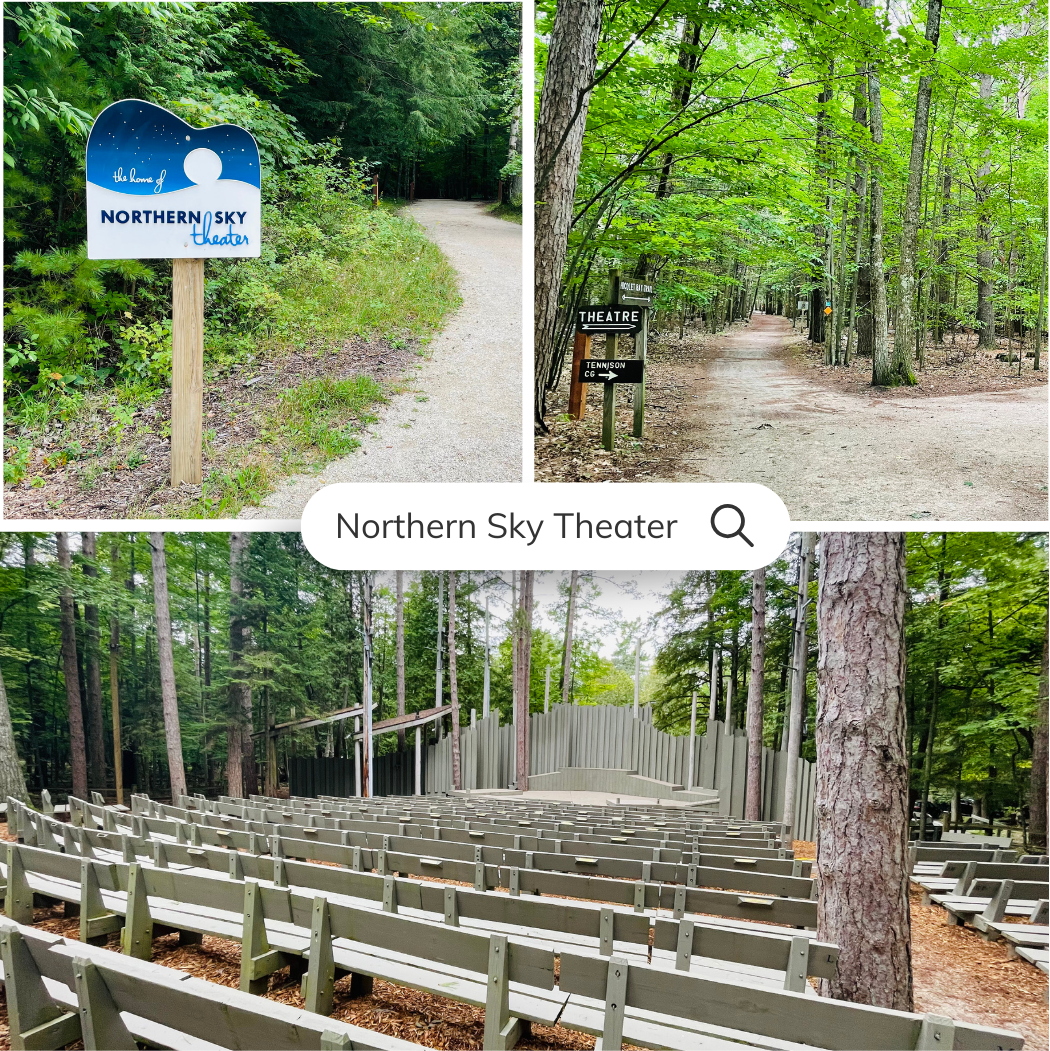Know&Go Guide: Door County, Wisconsin, USA
Door County* encompasses the tip of Wisconsin’s east coast peninsula, nestled between Green Bay and Lake Michigan. It’s a special place with droves of visitors returning year on year to enjoy the beauty of nature at its best.
Home to six state parks and famous for cherries, cheese and wine, this region encourages long, lazy/active visits at any time of year. Sturgeon Bay is the gateway to the county, with the small but perfectly formed towns of Ephraim, Sister Bay and Egg Harbor bustling with visitors.
In case you’re wondering, the name tag image is a fish boil, put simply: it’s a tradition brought by early early Scandinavian settlers comprised of “fresh-caught Lake Michigan whitefish with onions, potatoes and corn with a slice of Door County cherry pie for dessert.”^
(To find out more, see the “The Fish Boil Explained” below.)
Akin to a luau in Hawai’i, you watch the whole process, waiting for the moment they ignite the flames. Just after the pot boils over, in a burst of pyrotechnics, you’re whisked inside to partake of the meal.
I found the whole experience fantastic to behold and the end result was simple, but delicious.
On my first/last visit here – just two nights, ten years ago during The USA 50/50 Challenge – I stayed in the absolutely charming and tiny town of Ephraim (pop. 345) which stuck with me as a place to which I wanted to return. It evokes New England, especially in fall (coincidentally the season for both visits), and I’m not the first person to notice, given its epithet, "Cape Cod of the Midwest.” This time I stayed in Sister Bay – a busier town (pop. 1,189) with a main street offering many dining and shopping options – and Sturgeon Bay, the largest city (pop. 9,892) in the county with deep maritime roots.
*The name comes from the treacherous strait between the Door Peninsula and Washington Island, which early French explorers called Porte des Morts “Death's Door,” after they were warned by the local Native Americans.
^Destination Door County’s website.
-
Reservations are essential and the whole experience takes 30-40 minutes of standing outside, while the Master Boiler shares some history and details, all the while preparing the stage.
The pot of fish and vegetables are brought out, popped into the stand over the fire and they start to cook.
Then when the time is right – and that’s why they’re called Master Boilers – they throw an accelerant onto the fire, causing a great conflagration which forces the fish oil that has floated to the surface to boil over and off.
The fire is then dowsed, the pot taken inside and plates of goodness are delivered to the hungry hordes.
Here’s the history, as described by Destination Door County:
“Though Native American settlers practiced their own version of the fish boil, the modern version prepared in Door County has its roots in the late 1800s. That’s when a large migration of Scandinavian immigrants brought their version of the tradition to the area. With a seemingly endless supply of whitefish in Lake Michigan, the fish boil was an efficient and economical way to feed large crews of lumberman that were busy clearing the native forests.
For decades to come the tradition was passed down through churches and family gatherings, but it didn’t become a tourism staple until 1961, when Lawrence and Annette Wickman began the modern version at The Viking in Ellison Bay and the White Gull Inn did the same with their own recipe in Fish Creek.Today that tradition continues at several local restaurants. These carriers of the torch still use fresh, locally caught Lake Michigan whitefish and continue to provide a spectacle of storytelling and showmanship, capped with the famous boil-over that sends flames high into the air and elicits oohs and ahhs from crowds of hungry travelers.”
Experience
Fish Creek
Has to be done at least once, but you’ll be back.
This along with supper clubs is a mid-century Wisconsin tradition that thrives well into the 21st century.
Open daily Summer only. Breakfast & Lunch 7.30am-2.00pm, Fish Boil 5pm-close.
Outdoor entertainment among the pines
This open air theater is located inside Peninsula State Park in Fish Creek. If you enter within one hour of the performance and park in the the correct parking lot, you don’t have to purchase a park pass. Just driving into the park to find that lot is quite the adventure, following the signs and hoping for the best. The performances throughout the year are varied and I thoroughly enjoyed the one I attended.
Open Tue, Wed, Fri: 10am-5pm, Thu: 10am-8pm, Sat and Sun 10am-4pm.
Fully-accessible tower with expansive views
Positioned upon Eagle Bluff above the Niagara Escarpment on Peninsula Park's northeast shore stands this tower with views over Green Bay and the Upper Michigan shoreline.
Designed to allow all access to the views, this 60 foot high tower with 100 steps straight up or a longer, level winding route through the trees – with benches along the way to rest – to the observation deck. Either way, it's worth the effort.
Open May 1 to October 31, weather permitting.
Egg Harbor
90 minutes of local knowledge
I always recommend a walking tour as a great way to get to know a destination, however, in Door County taking a vintage-style trolley tour is the way to go. They have many from which to choose, whether it’s a wine, ghost or lighthouse tour, they’ve got you covered.
I did the Scenic tour and we were driven around the peninsula with the driver pointing out sites and stopping for a photo-op. It’s a good way to get your bearings and earmark places to visit after the tour.
As a plus, the trolley depot has a good gift shop where you can shop before or after the tour.
Open Mon-Sat 9am-1.30pm, Sat 8.30am-3pm.
Sturgeon Bay
Discover Door County’s maritime roots
The 10-story Lighthouse Tower is how you find this museum located on the waterfront in Sturgeon Bay. Within this tower are interactive exhibits on all floors. You start at the top and work your way down.
You’ll discover that the route of the St Lawrence River into The Great Lakes has been a major trade corridor for centuries and that the rock upon which Door County sits – the Niagara Escarpment, which extends into Canada and give us the famous falls – was formed more than 400 million years ago when the Silurian Sea covered the area. Come prepared to learn more.
Open Jan–Apr 10am–4pm, May–Oct 9am–5pm, Nov–Dec 10am–5pm.
Quaint museum filled with nostalgia
Nestled inside a 1939 building, this museum was named one of the Chicago Tribune’s "Best Small Museums in the Midwest." With a nature diorama, vintage fire station – stocked with trucks and equipment from earlier times – and nostalgic store fronts filled with local products of yesteryear.
Open daily May 1 - October 31 10am-4.30pm.
Consume
Ephraim
Stylish venue with imaginative menu
This surprising restaurant has been decorated with verve, drawing on the design store sharing the building, Spot Home, the owners also own the funky gift shop Space in Sister Bay. Their raison d'etre is colour which includes the decor, dishes and food, with gluten free, vegetarian & vegan alterations available.
Open daily 7am-8pm.
Sister Bay
Cheese curds to die for/from
This popular pizza place on main street was full to bursting when I popped in, so I plumped for takeaway cheese curds. Those little taste bombs of squeaky goodness that should be enjoyed very occasionally.
Open Mon-Fri 4-8pm, Sat-Sun 11am-8pm.
Sturgeon Bay
In-store bistro with an impressive menu
Located inside the Renard’s Cheese store it’s located on a county road 10 minutes south of Sturgeon Bay city, this bistro offers everything from soup to smoothies with lots of carb loading in between. I chose ‘Mom's Mac,’ an explosion of multiple cheeses, soft pasta and perfectly crunchy panko topping, enjoyed with a Blueberry Lavender Lemonade and I took a Mixed Berry Smoothie to go.
Open Mon-Fri 8am-5pm, Sat-Sun 9am-4pm.
Good craic and food
With a lovely beer garden this traditional Irish pub serves the locals good food and a good time every day.
Open Sun 9am-9pm, Mon-Thu 11am-9pm, Fri 11am-10pm, Sat 9am-10pm.
Purchase
Sister Bay
Scandinavian gift store with goats on the roof
This charming store on the main street is part of the family run Al Johnson complex, which includes a Stabbur – traditional, handcrafted log storehouse common to farmsteads in rural Norway – and Swedish restaurant. The goats, first put on the grass roof as a joke, now roam and munch most summer days between 9am and 3pm.
I went into this shop four times, in the two days I was in Sister Bay, and found something I just had to have each time. There’s everything from Icelandic wool socks to Swedish änglaspel (rotary candle votive) to Goat Poop Candy (I said yes to the first two, no to the second) and everything in between with a friendly staff ready to help.
Open 7 days, 9am-5pm.
Funky gift shop in Sister Bay
Sister shop to Spot Home in Ephraim and located below Spot Clothing on the main street, this shop has fun and funky things you didn’t know you wanted or needed.
Open daily 10am-5pm.
Egg Harbor
Cheese caves in Egg Harbor
I was given a tour of the ‘caves,’ and while they’re not natural – like you would find in Cheddar Gorge – these climate controlled rooms keep the product at optimum temperatures and clinically clean to turn out award winning cheese.
BTW the slice of Top Hat Bandaged Cheddar I purchased survived posting it to California to wait for me to undertake the long haul flight home to Sydney and was enjoyed on my sunny balcony down under.
Open Fri-Sun 10am-3pm.
Produce fresh from their orchard
Located across the road from Door Artisan Cheese and just up the road from Door County Trolley, this family run market sells produce from their own orchard, so you know its going to be fresh, along groceries and baked goods. I popped in hoping to get a sandwich or the like for my trolley tour, but alas, that’s the one thing they don’t have here. However, if a large apple pie is your idea of lunch, go for it.
Open daily 9am-5pm.
Sturgeon Bay
Cheeky cheese shop in Sturgeon Bay
This family-owned cheese-making dynasty was established in 1961 and is now run by the fourth generation of Renards. Located on a county road 10 minutes south of Sturgeon Bay city, the selections are extensive and I suggest you save space in your luggage for your many purchases.
Open Mon-Fri 8am-5pm, Sat-Sun 9am-4pm.
Everything to decorate your home under one roof
Housed inside The Marketplace, Bliss is the mainstay vendor with a vast collection of decorating items. The other stands sell jewellery, paintings and every type of craft imaginable.
Open Mon-Sat 10am-5pm-ish.
Epically stocked gift store
Walking in here, you’d better be prepared for sensory overload and to spend several hours over multiple visits just to see it all. I made space in my precious luggage to take some goodies home, so you know it’s worth it.
Open Mon-Sat 10am-5pm, Sun 10am-3pm.
Fab clothing store with amazing gift selection
With a name that conjures up Diagon Alley in Harry Potter, this vast store holds treasures and has been serving the locals for more than 30 years. They have fashion for all, cute as a button gear for kids, home decor and well-curated gifts, I love the rocking chairs out front, presumably to park your husband while you shop.
Open Mon-Sat 10am-5pm, Sun 10am-4pm.
Rest
Charming B&B with amazing & inventive breakfasts.
Name for the strong family roots the owners have in Sister Bay, this beautifully restored 1902 building houses The Inn and Roots Kitchen, “a quaint pub with outdoor dining, open to the public Saturday-Tuesday for lunch 11.30am-2.30pm.”
A short walk from the main street, it's in a quiet and lovely location. There are six varied rooms all with private baths, including the smallest room – The Backpacker – where I stayed, which was cozy, compact and decorated with photos from the owners’ international travels.
The highlight of my stay were the amazing breakfasts. They were definitely healthy, absurdly delicious and possibly vegan… this is the kind of food that could convert me to the cause.
Open Summer only.
Victorian B&B, bursting with charm
Opened by a young, local couple in May 2021 this charming b&b makes the most of a 1900 William Reynolds designed family home, with turn-of-the-century American Queen Anne style (aka Victorian) and Arts & Crafts elements. It’s nestled in a wildflower garden on the corner in a quiet neighbourhood, within easy walking distance to downtown.
After a comfortable stay, I left before dawn so I sadly wasn’t able to partake of their freshly baked breakfast treats, but I did get to enjoy happy hour, noshing on local cheese and chatting with the innkeepers.
Open April-November, Thursday-Tuesday.
This guide details all of the things The Packed Bag experienced. Please visit Destination Door County for more.




















